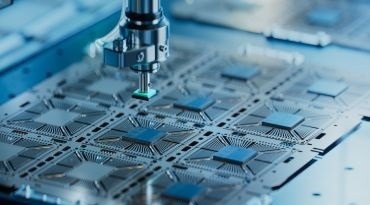Researchers from the Department of Physics at Oxford University have made a significant advancement in the creation and design of magnetic whirls in membranes, which can be seamlessly integrated with silicon.

These hurricane-shaped magnetic vortices, believed to travel at astonishing rates of up to km per second, may be employed as information carriers in an upcoming generation of extremely rapid and environmentally friendly computing platforms. The results were published in the journal Nature Materials.
Historically, the production of these illusive whirls was limited to materials with limited compatibility with silicon, which made them impractical for practical use. This challenge was solved by creating new magnetic layers that can be separated from their original crystal hosts and placed onto any suitable platform, such as a silicon wafer.
Leading the study team under Professor Paolo Radaelli’s direction was Dr. Hariom Jani of Oxford University’s Department of Physics, in cooperation with the Swiss Light Source and the National University of Singapore.
Silicon-based computing is much too energy-inefficient for the next generation of computing applications such as full-scale AI and autonomous devices. Overcoming these challenges will require a new computing paradigm that utilizes physical phenomena that are both fast and efficient to augment current technology.
Dr. Hariom Jani, Department of Physics, University of Oxford
Dr. Hariom Jani said, “We have been looking at harnessing magnetic whirls in a special class of materials called antiferromagnets, which are 100-1000 times faster than modern devices. The problem to date has been that these whirls can only be created on rigid crystal templates that are incompatible with current silicon-based technology, so our goal was to figure out a way to translate these exotic whirls to silicon.”
To achieve this, we fabricated ultra-thin crystalline membranes of hematite (the main component of rust and thus the most abundant antiferromagnet) that extended laterally over macroscopic dimensions. Such membranes are relatively new in the world of crystalline quantum materials and combine advantageous characteristics of both bulk 3D ceramics and 2D materials while also being easily transferrable.
Paolo Radaelli, Professor, Department of Physics, University of Oxford
The hematite layer was developed on top of a crystal template coated with a unique “sacrificial layer” composed of a cement component. The sacrificial layer readily separated the hematite from the crystal basis by dissolving in water. Finally, silicon and a few other suitable platforms were used to transfer the free-standing hematite membrane.
Using linearly polarized X-Rays, the team created a unique imaging method to see the nanoscale magnetic patterns inside these membranes. Using this technique, it was discovered that the free-standing layers support a strong magnetic whirl family. This might make it possible to process information incredibly quickly.
One of our most exciting discoveries was the extreme flexibility of our hematite membranes. Unlike their rigid, ceramic-like bulk counterparts that are prone to breaking, our flexible membranes can be twisted, bent, or curled into various shapes without fracturing. We exploited this newfound flexibility to design magnetic whirls in three dimensions, something that was previously not possible. In the future, the shape of these membranes could be tweaked to realize completely new whirls in 3D magnetic circuits.
Dr. Hariom Jani, Department of Physics, University of Oxford
The team is currently working on creating prototype devices that will stimulate the rich dynamics of these incredibly quick whirls using electrical currents.
Dr. Jani concluded, “Eventually, such devices could be integrated into new types of computers that work more like the human brain; we are very excited about what is coming next.”
Journal Reference:
Jani, H., et.al. (2024) Spatially reconfigurable antiferromagnetic states in topologically rich free-standing nanomembranes. Nature Materials. doi.org/10.1038/s41563-024-01806-2
Source: https://www.ox.ac.uk/
